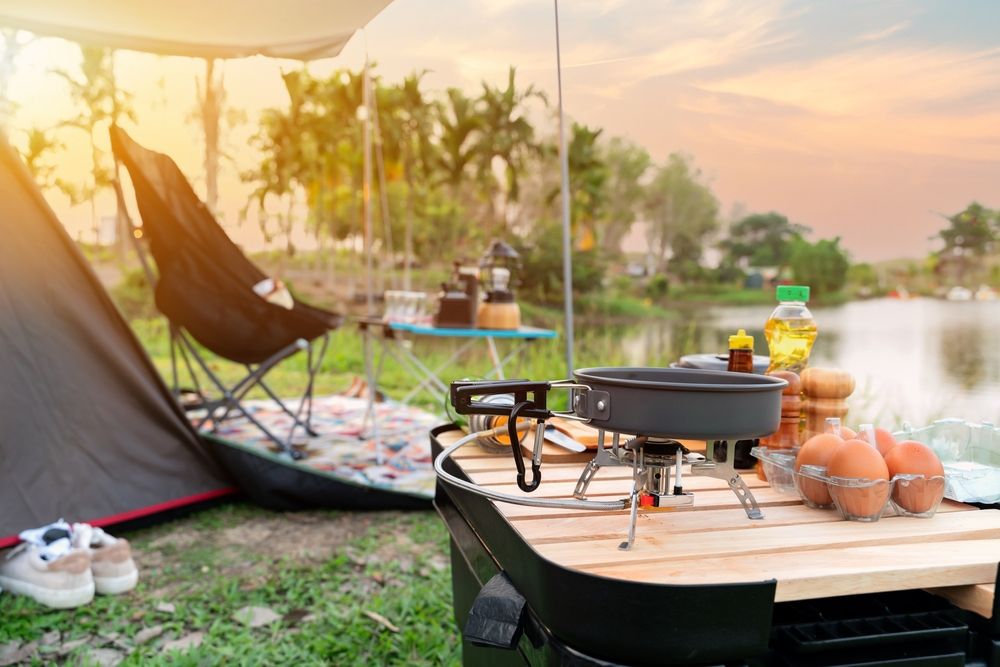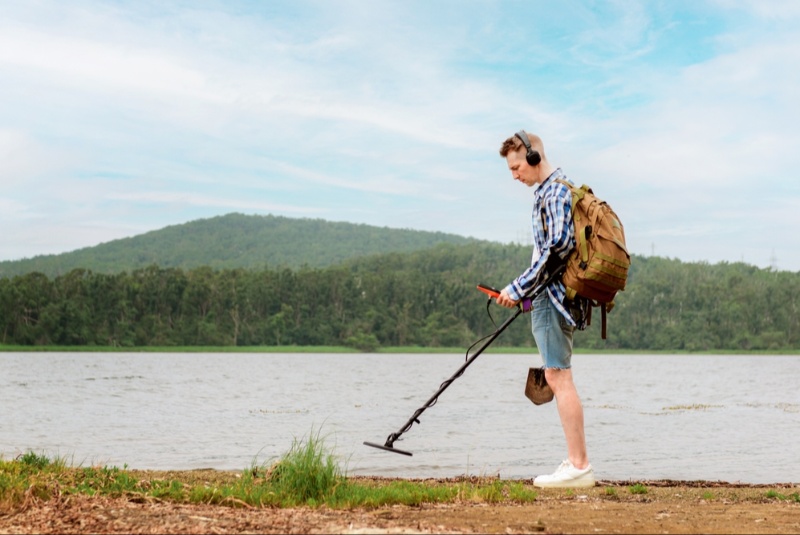Nothing beats the taste of a camp-cooked meal enjoyed under open skies—whether it’s a simple breakfast at sunrise or a hearty dinner after a day of hiking. But cooking outdoors can also be a tricky operation if you’re juggling flimsy pans, limited prep space, or inadequate utensils. The good news? A well-chosen, portable kitchen setup—complete with gear tailored for the elements—can make your campsite cooking nearly as convenient (and delicious) as it is back home. This in-depth guide explores the essential cookout items, from versatile stoves to multipurpose utensils, helping you assemble gear that’s lightweight, functional, and easy to pack, all while elevating your camp dining experience.
1. Why Invest in a Portable Camp Kitchen Setup?
Why It Matters
On a quick overnight trip, you might get by with a single pot, a spoon, and an open fire. But for multi-day or family camping, having the right equipment can reduce stress, keep food safer, and expand your culinary options. Instead of basic hot dogs, you can whip up chili, stir-fries, or even fresh pancakes, boosting morale and variety in the backcountry.
Top Benefits
- Efficiency: Proper gear (like a stable stove and well-designed cookware) saves time, letting you focus on enjoying your surroundings instead of wrestling with subpar cooking setups.
- Food Safety: Tools like cooler solutions or specialized containers keep perishables fresh, minimizing risk of food-borne issues.
- Better Meal Quality: Being able to simmer, sauté, or grill effectively means more satisfying camp meals—less reliance on freeze-dried food or bland convenience items.
- Organization: A dedicated cook station or collapsible table helps keep gear tidy, preventing chaos in shared spaces or around the campfire.
Takeaway
Equipping yourself with camp-friendly cooking gear and a well-thought-out setup can transform mealtime from an afterthought into an enjoyable highlight of your outdoor excursion.
2. Choosing the Right Camping Stove
Why It Matters
A reliable camp stove is central to your cooking routine—especially when fire bans prevent open fires, or you want consistent heat. Different stove designs cater to different group sizes and meal complexities.
Common Stove Types
- Single-Burner Canister Stoves
- Features: Typically screw onto pressurized fuel canisters (like isobutane/propane blends).
- Pros: Compact, lightweight—ideal for backpacking or simple cooking. Quick to set up.
- Cons: Limited cooking surface (one pot/pan at a time). Smaller canister capacity means frequent replacements for extended trips.
- Two-Burner Propane Stoves
- Features: Classic for car campers, often with a suitcase-like design.
- Pros: Allows simultaneous cooking of multiple dishes (pasta + sauce, for instance). Typically stable with decent wind shields.
- Cons: Bulkier, heavier, plus you need a larger propane canister or cylinder.
- Alternative Fuels (Liquid Fuel, Wood-Burning)
- Liquid Fuel: Some stoves run on white gas or kerosene. Good in cold temps, favored by mountaineers. But they can be fussier, requiring priming.
- Wood-Burning: Use small twigs or wood as fuel. Eco-friendly but reliant on available dry wood and can be smoky.
Factors to Consider
- Group Size: Cooking for 1–2 might be fine on a single-burner canister stove. Larger groups often benefit from a 2-burner.
- Meals You Plan: Simple freeze-dried or rehydrated dishes need less stove power or surface area than cooking elaborate meals with multiple pans.
- Climate: Cold or high-altitude trips can hamper performance of standard canister stoves. Liquid-fuel or specialized canisters might be better.
Takeaway
Decide on a stove that suits your group’s needs, meal ambitions, and how you’ll transport fuel. If you’re a car camper who enjoys multi-course dinners, a robust two-burner is a game-changer. If you’re backpacking ultralight, a small canister stove might suffice.
3. Essential Cookware and Food Prep Tools
Why It Matters
Your pots, pans, and utensils can either weigh you down or empower gourmet-level meal creativity. Picking items that are collapsible, lightweight, and multi-functional is crucial for the outdoors.
Cookware
- Material: Aluminum is light and conducts heat well, stainless steel is durable but heavier, titanium is ultra-light yet pricier. Non-stick surfaces can be beneficial but must be treated carefully to avoid scratches.
- Pot & Pan Selection: A typical setup might include one medium pot (for boiling), one small pot or frying pan, and a lid that doubles as a strainer.
- Nested Sets: Many camping cookware lines nest together, saving precious pack space.
Utensils and Tools
- Spatula & Spoon: Collapsible or multi-purpose utensils are ideal. A “spork” or combination spoon/fork can reduce clutter.
- Knife or Multi-Tool: Must-have for chopping ingredients, opening packages, or making minor gear repairs.
- Cutting Board: A small, foldable cutting board is handy if you plan to prep fresh veggies or meats.
- Dish Cloths and Biodegradable Soap: For cleanup, especially important to maintain hygiene in the field.
Takeaway
Strike a balance: enough pots/pans to cook your intended meals, but not an excessive array that bloats your kit. Lightweight, stackable cookware plus a basic set of utensils can handle 90% of camp meal scenarios.

4. Food Storage and Cooler Strategies
Why It Matters
Food spoilage risk increases outdoors, where refrigeration is limited. For car camping, a cooler is standard, but for extended or backcountry trips, you might rely on dehydrated meals or clever storage solutions.
Cooling Methods
- Hard-Sided Coolers: Provide excellent insulation for multi-day usage. Some premium models claim ice retention of 5+ days. They’re bulky but perfect for car-accessible sites.
- Soft-Sided Coolers: Lightweight and packable but typically hold ice for shorter durations—like 1–2 days. Good if you’re traveling short distances or need portability.
Dry Storage
- Re-sealable Bags: Keep moisture out, portion out ingredients.
- Bear-Resistant Containers (in bear country): Vital for safety.
Tips to Extend Coolness
- Chill your cooler with ice blocks or frozen water bottles overnight before packing.
- Group items by meal, so you’re not rummaging frequently and letting warm air in.
- Freeze proteins (like meats) in sealed bags, letting them thaw slowly during the trip for extended freshness.
Takeaway
Planning your cooler approach or storage method is essential if you intend to bring fresh produce, dairy, or meats. For more remote or longer trips, consider freeze-dried or shelf-stable items to avoid spoilage dangers.
5. Creating a Functional Camp Kitchen Setup
Why It Matters
Organization at the campsite speeds up meal prep, prevents contamination, and fosters a more enjoyable cooking environment. Building a defined “kitchen zone” ensures you know where everything is, even in the dark.
Practical Setup
- Camp Table or Surface: If your site lacks a picnic table, bring a lightweight foldable table or a sturdy camp kitchen station. Keep your stove, cookware, and food bins here.
- Wind Screen: Many camp stoves come with a built-in windscreen. If not, a simple foldable barrier can keep flames steady.
- Trash and Disposal: Have a small trash bag and a separate container for recyclables. Keep it sealed so wildlife can’t rummage.
- Lighting: Position a lantern or string LED lights overhead so you can see your prep area after sunset. Headlamps are great for tasks, but area lighting helps a lot for group cooking.
- Safety Distances: Place the stove away from tents or flammable items, and maintain a clear walkway around the kitchen zone to prevent accidental bumps or spills.
Takeaway
Investing a little time to set up a coherent “kitchen corner” in camp leads to less stress, safer cooking, and a more pleasant group dining experience.
6. Hygiene and Cleanup on the Trail
Why It Matters
Camp cooking can be messy, and if not managed, leftover food scraps or unclean utensils attract insects and wildlife, risking contamination or bear encounters. Good hygiene also avoids gastro issues that can ruin a trip.
Cleanup Tips
- Scrape Before Washing: Use a spatula or paper towel to remove large food residues from pans.
- Two-Basin System: If water is plentiful, set up a wash basin (with biodegradable soap) and a rinse basin for final cleaning.
- Sanitizing: If possible, use a few drops of bleach or disinfectant in rinse water for utensils—especially for raw meat contact.
- Dispose of Waste Properly: Strain leftover soapy water to remove food particles, then scatter or bury the water responsibly far from water sources, following local guidelines.
Takeaway
Adhering to proper cleaning routines is fundamental for your health and for preserving the site’s environment. Minimizing waste and avoiding attracting animals helps keep the wilderness safer for everyone.
7. Crafting Memorable Meals Without Overloading on Gear
Why It Matters
Packing every spice jar and multiple bulky gadgets can weigh you down. The trick is to maximize flavor with minimal items—smart planning ensures you can enjoy tasty dishes without a ton of specialized equipment.
Meal Planning
- Multi-Use Ingredients: Choose items that can serve multiple meals (like tortillas, which can wrap breakfast eggs or dinner fillings).
- Pre-Prep at Home: Chop veggies or marinate meats, then store them in labeled, freezer-safe bags. You’ll reduce on-site cutting board time.
- Spice Kits: Create a small spice “kit” with your essential flavors—salt, pepper, chili flakes, maybe a basic seasoning mix—kept in small containers.
- One-Pot or One-Pan Meals: Curries, chili, pasta dishes—these minimize dishwashing.
Takeaway
With creativity and planning, you can concoct varied, flavorful dishes that taste far better than basic camp rations. Stick to a modest set of gear, focusing on versatility and partial at-home prep.
Crafting a camp kitchen that’s both portable and efficient can open up a world of culinary possibilities for your outdoor adventures. Beyond saving you from boring freeze-dried fare or simple hotdog dinners, a well-planned kit—comprising the right stove, lightweight cookware, and an organized layout—allows you to savor real meals and share them with fellow campers. Combine these tools with thoughtful food storage solutions (like a suitable cooler or sealed containers), keep your gear organized in a designated cooking area, and adhere to cleaning/hygiene best practices, and you’ll find camp cooking transforms from a chore into a highlight of the trip.
Remember, you don’t need to lug an entire home kitchen into the wilderness—focus on multi-use items that handle multiple tasks, from a single pot that can boil water and sauté veggies, to a multi-tool that doubles as a bottle opener. By proactively planning your menu and abiding by proper food safety, you’ll come away with delicious experiences and minimal wasted time or resources. Ultimately, a well-executed camp cookout can become a beloved tradition, adding warmth (and great taste) to your outdoor escapes and giving you more time to relish the simple joy of dining under the stars with good company and memorable flavors. Enjoy your next outdoor feast!




